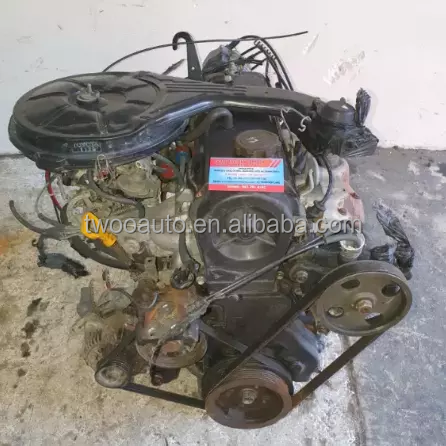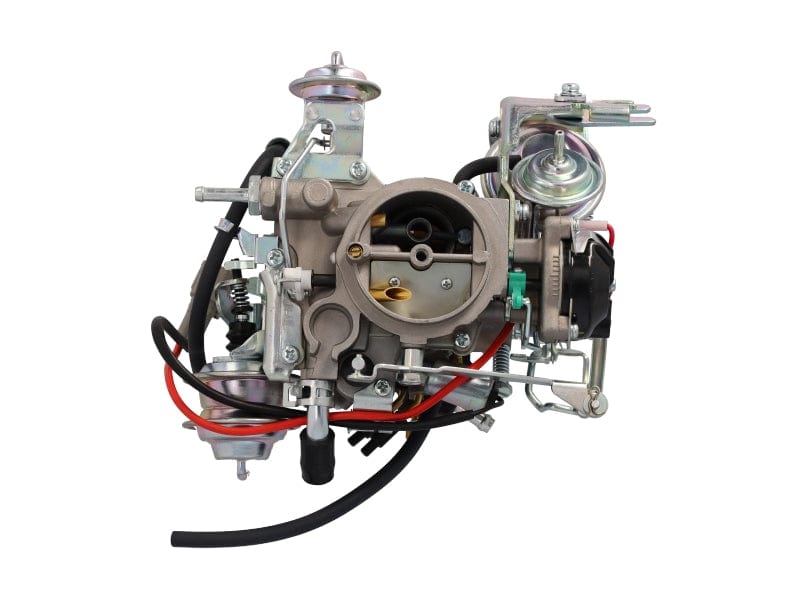Toyota Tazz: The Perfect Combination of Efficiency and Style in a Compact Car
Toyota Tazz: The Perfect Combination of Efficiency and Style in a Compact Car
Blog Article
Explore the current Fads in Engine Modern Technology Through Tazz
In the swiftly progressing landscape of automotive technology, Tazz stands at the forefront, highlighting substantial innovations in engine systems that focus on both development and sustainability. From hybrid engines that maximize gas efficiency to the emergence of hydrogen gas cells, the patterns shaping modern powertrains are not just enhancing efficiency however also addressing critical ecological difficulties.
Crossbreed Engine Innovations
Crossbreed engine developments stand for a critical shift in vehicle innovation, incorporating the benefits of internal burning engines with electric propulsion systems. This assimilation not only boosts fuel performance but additionally decreases exhausts, meeting significantly rigid ecological policies. By making use of both energy resources, hybrid engines can optimize performance, delivering power when required while preserving fuel throughout less demanding motoring conditions.
Recent innovations in hybrid modern technology include renovations in battery efficiency and regenerative braking systems. These technologies permit better power recovery during slowdown, which can be redirected to aid in acceleration or power auxiliary systems. Producers are focusing on light-weight products and compact styles to make the most of the effectiveness of crossbreed powertrains.
The growth of plug-in crossbreeds has also expanded the market, enabling vehicle drivers to bill their vehicles using conventional electric outlets. This function commonly permits substantial all-electric array, more lowering dependancy on typical gas. tazz. As the auto industry remains to evolve, hybrid engine technologies are anticipated to play an essential role in bridging the gap in between standard lorries and totally electrical versions, supplying a transitional option that caters to diverse customer demands and choices
Advances in Electric Powertrains
The vehicle landscape is quickly developing, with electric powertrains arising as a leading pressure in sustainable transportation. Breakthroughs in electrical car (EV) technology are substantially enhancing effectiveness, customer, and efficiency experience. Key advancements include improvements in battery chemistry, which have raised energy thickness, minimized charging times, and prolonged overall battery life.
Solid-state batteries, as an example, guarantee to revolutionize the marketplace by offering better safety and performance compared to typical lithium-ion cells. Developments in regenerative stopping systems are making it possible for cars to recoup energy during slowdown, contributing to general performance.
In addition to battery modern technology, electrical motor designs are ending up being extra sophisticated. Advancements such as incorporated motors and advanced thermal administration systems are aiding to optimize power shipment and minimize weight, inevitably enhancing car dynamics.

Collectively, these developments emphasize the commitment to transition in the direction of cleaner, more efficient transport options, placing electric powertrains at the leading edge of auto technology.
The Surge of Hydrogen Fuel Cells
Increasingly, hydrogen gas cells are obtaining grip as a practical alternative to traditional inner burning engines and battery electrical cars. This technology harnesses the chemical power kept in hydrogen, converting it right into power with an electrochemical reaction with oxygen. The key byproduct of this process is water, making hydrogen gas cells an eco-friendly option with absolutely no emissions at the tailpipe.

Automakers are progressively spending in hydrogen gas cell modern technology, recognizing its capacity for long-range applications and fast refueling capabilities that measure up to conventional fuels. Furthermore, markets such as sturdy transportation and public transportation are particularly well-suited for hydrogen fuel cells, where battery electric services may drop short as a result of weight and range limitations.
As research and investment continue to expand, hydrogen fuel cells are positioned to play a significant role in the future landscape of tidy transport and power remedies.
Enhancements in Internal Combustion Engines
Technologies in interior combustion engine (ICE) modern technology are changing traditional automobiles to fulfill modern-day ecological requirements and performance assumptions. Among one of the most considerable enhancements involves the assimilation of innovative gas injection systems. These systems optimize the air-fuel mixture, boosting burning effectiveness and causing minimized discharges. Direct gas injection, for instance, allows for far better atomization of gas, resulting in more full burning and enhanced power result.
Furthermore, turbocharging has gotten prominence, permitting smaller engines to supply greater efficiency without the weight of larger engines - tazz. This modern technology not only enhances effectiveness yet likewise adds to reduce gas usage. Variable shutoff timing systems are also being improved, making it possible for engines to adapt to numerous driving conditions for boosted torque and responsiveness
Moreover, making use of lightweight materials in engine building and construction is ending up being common, further enhancing gas performance by decreasing total vehicle weight. Engine control systems (ECUs) are significantly sophisticated, allowing real-time changes that optimize performance and exhausts.
These improvements collectively indicate a critical change in ICE modern technology, aligning with global sustainability goals while still supplying the efficiency drivers get out of their automobiles. As the sector evolves, these improvements remain to form the future of conventional vehicle design.
Future Fads in Engine Performance
Substantial advancements in engine efficiency are expected as makers concentrate on incorporating innovative modern technologies to fulfill stringent environmental policies and consumer demands. The shift towards electrification, hybrid systems, and alternative fuels is reshaping the automotive landscape, driving developments that enhance fuel economy and reduce check it out discharges.
One of the essential patterns is the application of advanced materials and manufacturing strategies. High-strength alloys and lightweight composites contribute to reduced lorry weight, hence boosting total effectiveness. Additionally, the adoption of turbocharging and variable shutoff timing innovations enables for improved power output from smaller sized engines, additionally improving fuel economic situation.

Final Thought
Advancements in crossbreed engine systems, electrical powertrains, and hydrogen fuel cells demonstrate a commitment to minimizing exhausts while boosting efficiency. Improvements in internal combustion engines and a focus on lightweight materials add to total engine performance.
From crossbreed engines that optimize fuel efficiency to the development of hydrogen fuel cells, the patterns shaping browse this site contemporary powertrains are have a peek at this website not only improving performance however likewise attending to essential ecological obstacles.Crossbreed engine technologies stand for a crucial change in auto modern technology, incorporating the advantages of interior burning engines with electric propulsion systems.Additionally, turbocharging has gained prominence, permitting smaller sized engines to supply greater performance without the weight of larger engines. In addition, the fostering of turbocharging and variable shutoff timing innovations allows for improved power result from smaller sized engines, additionally improving fuel economy.
Renovations in interior burning engines and a focus on lightweight materials add to general engine effectiveness.
Report this page